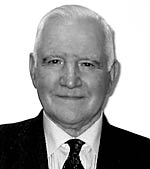Events and excursions, Autumn/Winter 2006/07
 |
Saturday 11 November 2006: The Nottinghamshire History Lecture: Men Behaving Badly? Gentlemen, Rogues and Fellows in Seventeenth-Century Nottingham – Jennie Jordan
Jennie Jordan (pictured right) is currently writing up her PhD at Nottingham
Trent University on ‘Becoming a Man: Prescriptions of Manhood and
Manliness in Early Modern England’. She is also convenor of a successful
early modern social history forum called FORWARD. In her lecture Ms Jordan
presented some of her research which was quite wide-ranging. Seventeenth-century
men were concerned with order and stability to maintain their patriarchal
authority in their everyday lives, whether at home or in society outside
it. How this was carried out could cause a great deal of anxiety, as men
were required to exert control over themselves in order to gain control
over their wives, children and others. Marriage was seen as the ultimate
state of social acceptance, and unmarried men were regarded as not fully
able to participate in society. The test of manhood was the ability to
provide for a wife and family, and failure to do so could subject a man
to various (largely economic) penalties. Great efforts were made to get
a man to acknowledge and support his illegitimate children, in order not
to burden the (often meagre) resources of the local parish. Drunken husbands
were vilified, particularly in contemporary popular ballads, as this was
an obvious demonstration of lack of control, and being drunk was ‘the
shipwreck of the mind’. The lecture was illustrated by examples of
the charmingly primitive, often amusing, woodcuts found with the printed
ballads of the time. These aroused a great deal of interest, and the many
questions after the lecture demonstrated how Ms Jordan had gained the audience’s
attention.
Trevor Foulds
 |
Saturday 9 December 2006: The Christmas Story in Stained Glass – Peter Gibson
This last lecture of the 2006 programme attracted a large audience. We were transported by a series of excellent slides on a journey not only through many ecclesiastical buildings of Europe, but also through the New Testament accounts of the Nativity story. We were handsomely treated to a delightful and moving journey, as well as to living examples of the photographic skills and religious faith of the presenter, Peter Gibson, FSA, OBE. Peter has lived most of his life under the walls of York Minster and, like his father before him, has lovingly cared for and restored the stained glass of York, as well as that of twelve other cathedrals and over two thousand parish churches. We followed the journey around some of the windows of these buildings, and were able to observe the spiritual message and nuances provided by the many craftsmen across the ages in their depiction of the Biblical accounts of the Annunciation and the Nativity.
Peter has been justifiably awarded a range of honours for his significant
work by countries throughout Europe, as well as being awarded the Freedom
of the City of London, and the St William's Silver Cross of the Archbishop
of York. The Thoroton Society has been most privileged to have enjoyed
such a memorable afternoon.
Alan Langton
Saturday 13 January 2007: Archaeology Lecture. The Newark Iron Age Gold Torc - Rachel Atherton and J D Hill
 |
 |
A full house got the year off to an excellent start with a fascinating
lecture on the Newark gold tore, given jointly by Rachel Atherton (right),
Portable Antiquities Scheme (PAS) officer for Nottinghamshire and Derbyshire
and curator at Derby Museum, and J D Hill, an Iron Age specialist and director
of research at the British Museum. Also on hand was Maurice Richardson,
the metal detectorist and keen amateur archaeologist who found the tore
in a ploughed field near Newark in 2005 - not surprisingly, the most spectacular
find of his thirty-five years in archaeology. Rachel outlined PAS's work,
which deals with the reporting and identification of casual finds of archaeological
objects, 92% of which are made by detectorists. The Newark torc, a gold
and silver alloy neck band weighing 700g (nearly 2lb), was made around
100 BC in the Snettisham area of Norfolk. Excavations following its discovery
suggest it was buried adjacent to a ring-ditch and a rectilinear ditched
feature, which looked enticingly like a small Arras-type square barrow;
however these interesting features produced no finds on excavation. JD
Hill (left) described his initial disbelief that the torc was genuine,
and gave the science team at the British Museum two weeks to prove it was
a fake. However, analysis and detailed examination proved it to be an authentic
middle Iron Age object, almost identical to an example from Sedgeford in
Norfolk. Probably both were products of the same craft workshop, and part
of a later prehistoric tradition of intricate neck ornaments intended to
convey the status of the wearer and their community, rather like a modern
mayoral chain. The Newark torc probably found its way from Norfolk, where
it has many parallels, to a Newark field via many generations of gift giving,
perhaps moving several miles from its original owner's community with each
generation. Exactly why such tores were buried is unclear; it might have
been a religious offering made at a time of change and uncertainty in Britain,
when many similar objects were deliberately interred. Thanks to a grant
from the National Heritage Memorial Fund, this magnificent piece of Iron
Age art has been acquired by Newark and Sherwood District Council, and
will eventually go on display in one of the town's museums.
Keith Challis
Saturday 10 February 2007: The Nora Witham Lecture. Non-Conformity in South Nottinghamshire – Howard Fisher
 |
Howard Fisher’s research into the nonconformists in the Wolds villages
of Keyworth, Normanton-on-the-Wolds, Stanton-on-the-Wolds, Plumtree, Widmerpool
and Wysall, has taken him into the records of Wesleyan and Primitive Methodists,
Baptists and Congregationalists. What he has found made a fascinating lecture
in which he considered buildings, people, schools, and the whole culture
of nonconformity. It transpired that the Indian Knights curry house in
Keyworth was the original Congregational chapel in the village. It was
replaced in 1903, and like many of the other chapels in the area, cost
money the members could ill-afford. Problems with the Anglicans, problems
paying the minister, problems with members who strayed from the rules, and
problems with the Band of Hope, all figured in the lecture – but
it was not just about what went wrong. The role of the Sunday Schools in
providing education, at least before the 1870s, the social life of the
chapels, the importance of framework knitters in the congregations of Primitive
Methodist chapels, and other fascinating little vignettes about life among
the Wolds nonconformists, all figured in the talk, which we can hope to
see written up for our Transactions in the near future.
John
Beckett